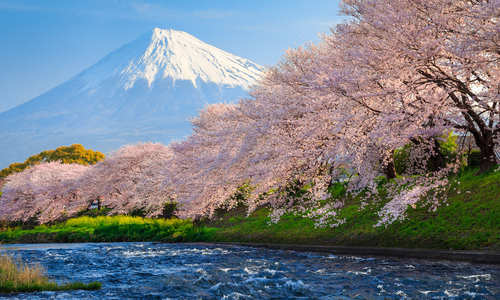Introduction
The southern half of Japan’s main island – Honshu – is a region rich in heritage; sites range from geisha teahouses to impossibly tiered castles. However, led by Hiroshima’s optimism, the bright lights of its cities are firmly set on the future.
Temples and gardens
As Japan’s cultural heart, visits to the region often start with Kyoto and its pretty neighbour, Nara. Serving as the Japanese capital for over a thousand years, Kyoto’s imperial legacy is realised in a vast array of Buddhist temples, grand palaces and gardens that range from intimate Zen squares to whole palatial fields. Spared from bombing in WWII due to its cultural significance, much of its 400 Shinto shrines remain intact and it’s no surprise that it features no fewer than 1,600 Buddhist temples. It’s a world away from next-door Osaka. Here, giant Ferris wheels are perched on top of department stores and neon signs cover entire building sides. The excesses don’t stop there with the city often known as the country’s gastronomic capital, famed for its canalside okonomiyaki restaurants that serve pancake pizzas. Remember to take some time to navigate the grounds and moats of Osaka Castle and summit one of the city’s towering skyscrapers.

Kyoto gardens
Historic cities
Unlike Kyoto, the events of 6 August 1945 have had a profound effect on Hiroshima. However, after you’ve studied its superb Peace Museum you’ll find a city born anew with tree-lined avenues that bring you to art galleries and teahouse-speckled parks. Just outside, on the Seto Inland Sea, are a set of fractured islands that make for pretty cruises to famed floating shrines and hikes past deer and Buddhist temples. Elsewhere, there’s Hagi’s feudal era castle old town – complete with samurai residences – and Kurashiki’s merchant canals, lined with 250-year-old ryokans.

Yasaka Pagoda, Sannen Zaka Street, Kyoto






















